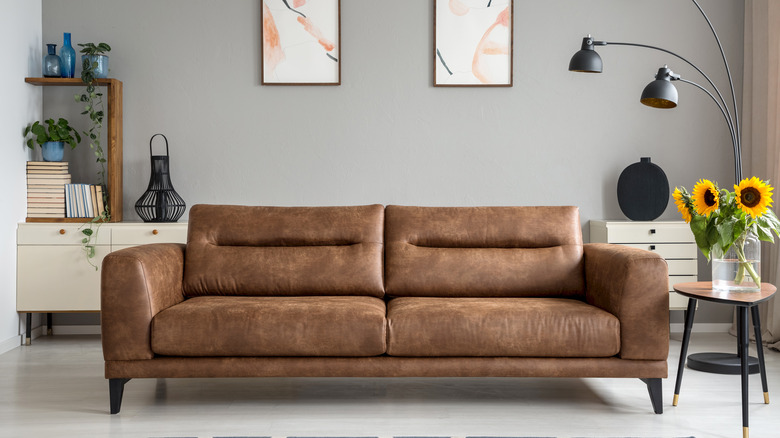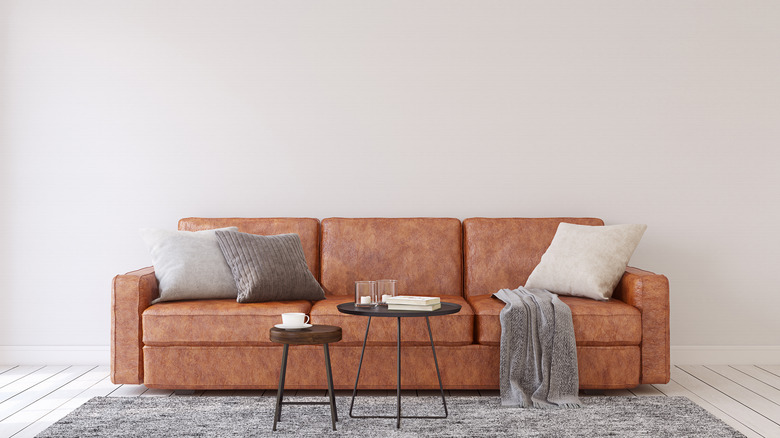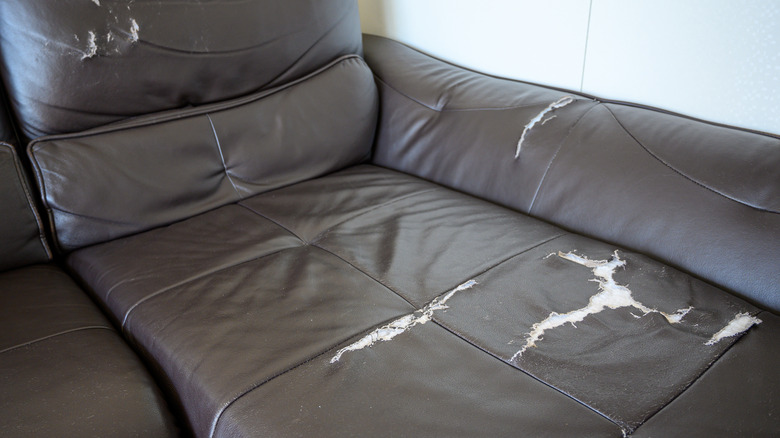What You Need To Know Before Buying A Leather Couch
Couches come in various upholstery materials, and one of the most luxurious types is leather, a natural material made of cowhide. Furnishing your home with leather couches is a timeless look that won't go out of style, too. They're also easy to clean and maintain. However, this material is not as durable as synthetics like polyester, nylon, and velvet.
Vevano Home explains that there are four different leather grades. The highest quality is full grain because it's the most natural. Since it's not sanded or polished, it is more durable and has imperfections, making it unique. Top-grain leather is the next best type. The top layer is removed, making it thinner, pliable, and perfect looking. A top coat is also applied to protect it from damage and stains. Genuine leather is the most popular grade because it's made of all the leftover pieces, making it inexpensive. Corrected grain is an affordable option made from cheaper leather that's dyed to look more expensive. Depending on the type of leather grade you choose for your couch, it can be more susceptible to problems like color damage or cracking and peeling.
Color damage
Color damage can happen to your leather couch for a couple of reasons. Luckily, it's easily preventable and can usually be fixed. Body oil from people lounging on the sofa is one reason the leather can become discolored. The higher grade you choose, the more susceptible it is to damage from the oils and sweat on our skin and hair. Since it's a natural material, it can absorb these oils. The leather will look darker in spots that are frequently touched, such as the armrests and headrests, according to La-Z-Boy. Regularly caring for your leather with a gentle cleanser and conditioner will prevent any oils from affecting the leather.
The sun can also damage your leather couch. The longer it is exposed to the ultraviolet light that comes from direct sunlight, the lighter colored the leather will become. Heat sources like furnaces and fireplaces can affect your couch similarly. To prevent this from happening, move your furniture away from direct sun and high heat. Although, if it is already discolored, you can dye it.
Cracking and peeling
Leather is a natural material, so it requires extra care to continue looking pristine. Castlery explains that it is similar to our skin and needs to be moisturized when the environment is too dry. If not, it will crack. To prevent this, always apply a conditioner after cleansing your couch. If you care for the leather properly, you should avoid running into many of the problems that come with this material.
Peeling only happens to lower-quality leather, so if your couch is full grain, this should never happen. This is because peeling occurs when bonded or fake leather begins separating from the backing. Genuine leather won't peel, but the top layer of pigment or treatments can come off. Like the other problems with leather, cleaning and conditioning are the best ways to avoid this. To repair this, a professional will remove all of the finish and apply a new protective top coat. Bonded leather is almost impossible to fix once it begins peeling.


